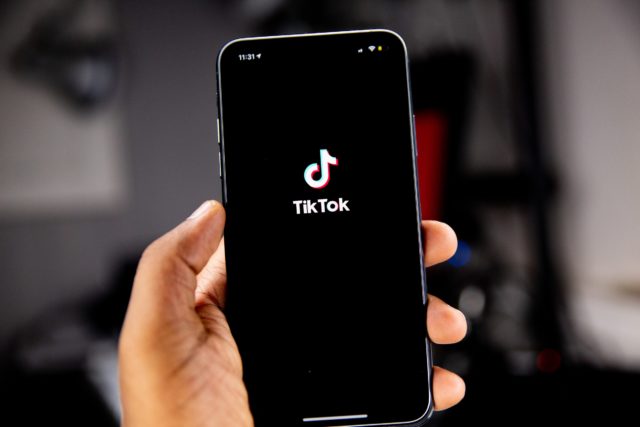When the Usual Sleep Tricks Don’t Work
By: Kristen Lipari, Ph.D. | June 27, 2025

Real Help for Insomnia
We’ve all had a sleepless night or two—maybe after a stressful day, too much screen time, or that ill-advised late cup of coffee. It’s easy to say, “I had such bad insomnia last night.” But clinical insomnia goes far beyond the occasional restless night. It’s a diagnosable condition that affects millions—and it’s widely misunderstood.
Approximately 10% of adults meet the criteria for insomnia disorder at some point in their lives, and roughly 30% experience symptoms of insomnia at some point. Because insomnia impacts so many, it’s important to understand what insomnia really is, why it persists, and – most importantly – what actually works to treat it. (Spoiler alert: It’s not warm milk or lavender spray.)
What Insomnia Really Means
Insomnia isn’t defined by the number of hours you sleep—it’s about persistent difficulty falling asleep, staying asleep, or waking up too early, despite having the chance to sleep. Insomnia is more than a few bad nights of rest. To meet the criteria for chronic insomnia, sleep issues must occur at least three nights a week for three months or more and they must cause distress such as daytime exhaustion, irritability, or trouble focusing that impacts how you function socially or at work.
Insomnia isn’t just a nighttime problem. It often turns into a 24-hour cycle of worry, frustration, and exhaustion. You might start dreading bedtime, thinking “What if I can’t fall asleep again?” or “If I can’t sleep, tomorrow will be miserable.” Over time, your brain begins to associate bedtime with stress and anxiety, which makes it even harder to fall asleep. If your mind perceives sleep as a threat, your body stays alert, you are less likely to sleep well – and the cycle continues.
When you tell people you’re having trouble with sleep, you’re likely to hear a lot of well-meaning advice: try this sleep aid, take this supplement, buy a particular pillow, use a white noise machine, get blackout curtains. While some of these tips may be helpful, true insomnia isn’t usually solved with good sleep hygiene alone.
Why Sleep Hygiene Isn’t Enough
While healthy sleep habits like avoiding screens before bed, skipping caffeine in the evening, and keeping a consistent sleep schedule can help address mild sleep problems, they don’t fix clinical insomnia.
Many people with insomnia already practice healthy sleep hygiene and still lie awake for hours. That’s because insomnia is more than behaviors, it’s a learned pattern involving both mental and behavioral components that sleep hygiene alone can’t fully address.
This is where Cognitive Behavioral Therapy for Insomnia (CBT-I) comes in. CBT-I is a form of Cognitive Behavioral Therapy (CBT) specifically designed to target the unhelpful thought patterns and behaviors that sustain insomnia directly. It’s the most effective, “gold standard” treatment for chronic insomnia, recommended by the American College of Physicians, the National Institutes of Health, and the American Academy of Sleep Medicine. And unlike sleeping pills, CBT-I treats the root causes of insomnia – and its results are long-lasting.
How CBT-I Works (and Why It Might Surprise You)
CBT-I helps retrain your brain and body to sleep naturally again. It breaks the cycle of fear, frustration, and poor sleep habits through structured techniques that might feel surprising or even counterintuitive at first – but they work. CBT-I is an effective, evidence-based approach and is comprised of the following components:
1. Sleep Restriction Therapy
This component of the therapy involves temporarily limiting your time in bed to match the amount of sleep you’re currently getting – for example, 5.5 hours. While it might sound backward, this method strengthens your body’s natural drive for sleep (known as sleep drive) and helps re-establish a connection between your bed and restorative sleep. Over time, as your sleep becomes more consistent, you slowly increase your time in bed.
2. Stimulus Control
The goal is for your bed to signal one thing to your brain: sleep. If you’re scrolling, worrying, or lying awake, tossing and turning your brain starts to associate your bed with wakefulness. Stimulus control helps you reassociate your bed with sleep by following certain rules:
- Only go to bed when you’re sleepy
- Use the bed only for one of the three S’s: sleep, sex, or if you are sick (rest)
- If you’re awake more than 15–20 minutes, get out of bed and engage in a calming or relaxing activity
3. Cognitive Restructuring
Insomnia thrives on anxious thoughts such as, “I’ll never sleep,” “I’ll fail tomorrow,” or “Something’s wrong with me.” Using CBT skills, CBT-I helps you to identify and challenge these unhelpful thoughts, replacing them with more realistic, balanced thinking. Over time, you’ll learn that one bad night doesn’t ruin everything—and that your body still knows how to sleep.
When practiced consistently, especially with the guidance of a licensed psychologist trained in CBT-I at Therapy Changes, these strategies can dramatically improve sleep – and your quality of life.
4. Sleep Education & Circadian Awareness
CBT-I also teaches you how your sleep drive (your body’s natural drive for sleep) and circadian rhythm (your internal clock) work together to regulate healthy sleep patterns. Many people unknowingly disrupt these systems by taking naps, sleeping in on weekends, or spending too much time in bed.
Fun fact: Sleep drive works like hunger. If you snack all day, you’re not hungry for dinner. The same goes for sleep – staying awake during the day builds up “sleep pressure,” which makes it easier to fall and stay asleep at night.
5. Relaxation Techniques (Optional, But Helpful)
While not the core focus of CBT-I, relaxation tools like breathing exercises, mindfulness practices, and progressive muscle relaxation can lower stress and reduce pre-sleep anxiety before bed.
How Long Does CBT-I Take?
Most people complete CBT-I in just six to eight sessions, either in person or via teletherapy. Many start sleeping better in just a few weeks and results of CBT-I often last for years, without the need for medication that has poor long-term efficacy.
The Bottom Line
Insomnia is much more than a few sleepless nights. It’s a clinical condition that many people suffer from. It isn’t your fault, and it is treatable. The good news is you can retrain your brain to sleep well again. If you dread bedtime, feel wired when you need to sleep, or feel exhausted despite doing everything “right”, you’re not alone. Insomnia is a learned pattern—and that means it can be unlearned. CBT-I gives you the tools to take back your nights and wake up feeling like yourself again.
If you’re ready to sleep better, the team at Therapy Changes is here to help. Our San Diego psychologists specialize in CBT-I and will work with you to identify and address the specific patterns disrupting your rest. You don’t have to suffer through another sleepless night – and you don’t have to do this alone. Contact us today to schedule an appointment and take the first step toward better sleep.
Photo by Sergio Kian on Unsplash



